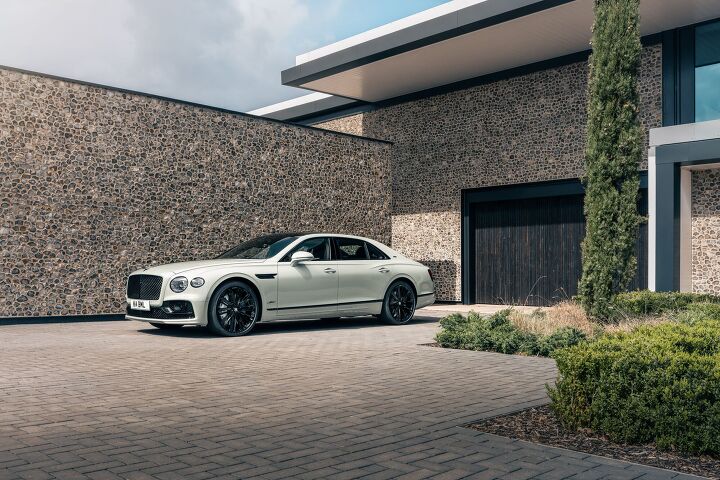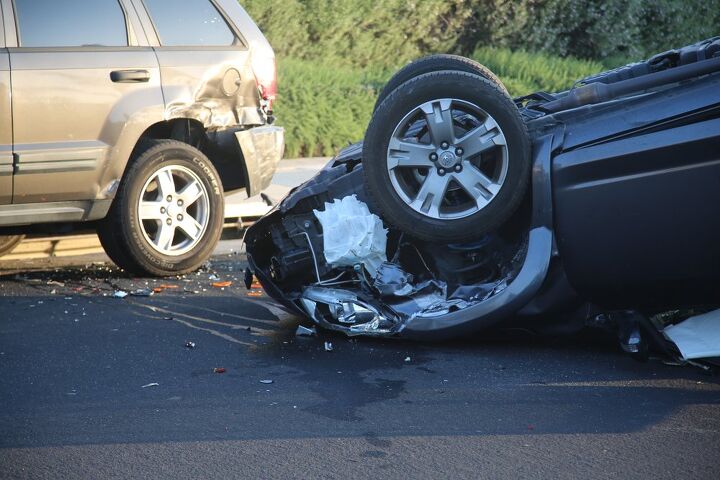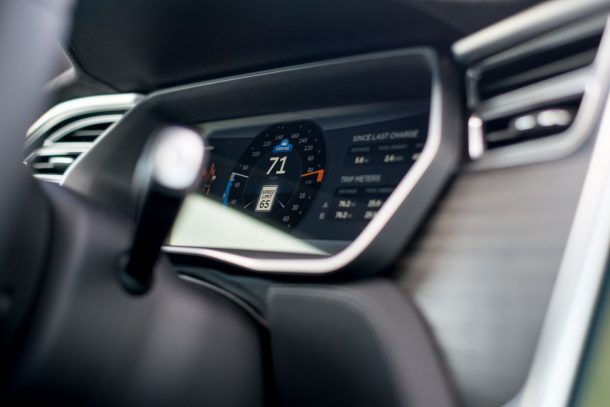#CarCrashes
Opinion: The Bentley Crash in New York is Scrambling Brains
Last week, on the day before Thanksgiving, a middle-aged couple in a Bentley met a fiery end under mysterious circumstances near the U.S.-Canada border outside of Buffalo, New York.
TTAC Video of the Week: Don't Go Showing Off
We all know that when you try to show off, you often end up in a ditch.
It's a lesson many of us learn as kids -- we try to do a trick on our bikes or take a turn too fast, and we get a dose of humble pie. Yet, we don't fully learn, because we get our driver's license and do the same dumb stuff while driving a car.
Video of the Week: Check Twice Before Turning
It's the midpoint of the work week and you need a laugh. This week's video is a few years old but it's new to me, and hopefully to you.
TTAC Video of the Week: 1920s-Era Car Jumps Over a House
Presented, for your afternoon amusement, a video in which a 1920s-era automobile jumps a house, with fairly predictable results.
Runaway Tesla Causes Chaos in China
Tesla said yesterday that it will work with Chinese law enforcement to investigate why a Model Y went out of control in that country earlier this month, killing two people and injuring three more.
Study: Permanent Daylight Saving Time Good for Bambi, Bad for Roadkill Venison
A new study suggests that a shift to permanent daylight saving time would prevent 37,000 car and deer collisions on American roads every year.
Why Are Traffic Deaths Increasing While People Are Driving Less?
The latest data from the National Highway Traffic Safety Administration (NHTSA) is confirming what local agencies have already been suggesting. Last year represented another sizable increase in U.S. roadway fatalities, pitching up by 10.5 percent over the elevated death rate witnessed in 2020. The agency has estimated that 42,915 people were killed in 2021, whereas 2020 resulted in 38,824 fatalities — a 7.1-percent increase over the declines seen in 2019. While the current situation is not nearly as bad as the rates witnessed during the 1970s, this still represents the highest per capita fatalities in sixteen years and everyone is trying to get a handle on why.
Traffic deaths have been on the rise since the start of the pandemic, confusing everyone who counts crashes because the supporting data also shows that there was a lot less driving being done during the period. Historically, years where people are disinclined from hitting the road due to a beleaguered economy tend to represent far fewer traffic-related fatalities. We can see this happening in 1942 when the U.S. braced itself to enter World War II by rationing everything from fuel to rubber. Another glaring example takes place in 1932, as the nation reached the darkest point in the Great Depression. In fact, there are very few examples of per capita improvements in on-road deaths from the pre-war period, and those that do exist coincide directly with economic recession.
NHTSA Estimates Minor Improvement in Roadway Fatalities for 2018
The National Highway Traffic Safety Administration has released its preliminary report on how many people died on U.S. roadways in 2018, indicating that overall traffic deaths had likely fallen by 1 percent. While the information doesn’t exactly justify a party, it’s good news after the last few years attempted to provide new footage for the Red Asphalt series.
As the first major spike in traffic deaths since the “Swinging Sixties,” 2015 freaked everyone out a bit. Save for a few annual hiccups, American traffic deaths (contrasted with its population) had been on the decline for decades. However, by the end of 2016, things looked certain — it was becoming less safe to drive in the United States.
Operational Limits Played 'Major Role' in Fatal Tesla Autopilot Crash, Says NTSB
According to a preliminary report from the National Transportation Safety Board, the “operational limitations” of Tesla’s Autopilot system played “major role” in a highly publicized crash in May of 2016 that resulted in the death of a Model S driver.
On Tuesday, the NTSB cited the incident as a perfect storm of driver error and Tesla’s Autopilot design, which led to an over-reliance on the system’s semi-autonomous features. After a meeting lasting nearly three hours, the agency’s board determined probable cause of the accident was a combination of a semi truck driver failing to yield the right-of-way, the Tesla driver’s unwillingness to retake the wheel, and Tesla’s own system — which may have set the framework for the accident.
























Recent Comments